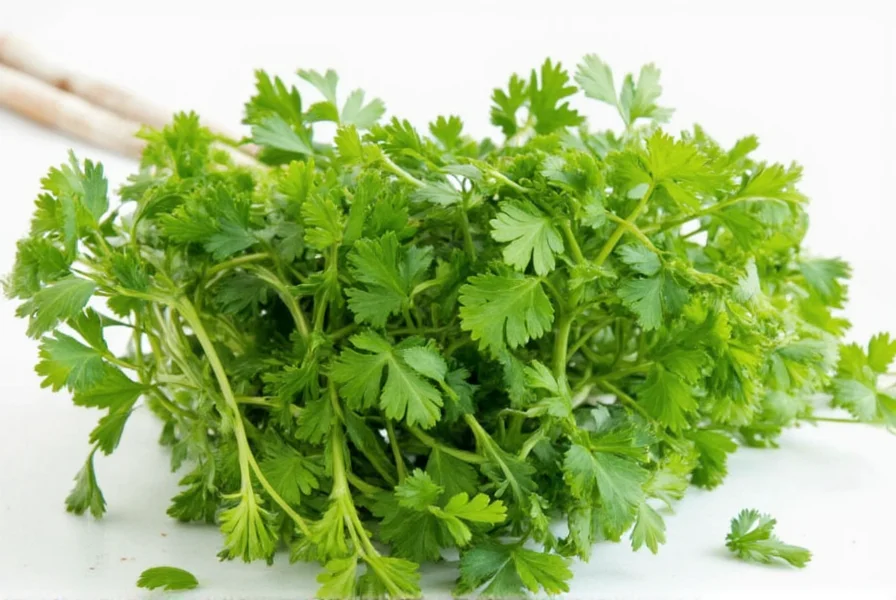The standard conversion ratio for fresh parsley to dried parsley is 3:1—1 tablespoon of fresh parsley equals 1 teaspoon of dried parsley. This guide provides the exact measurement chart, expert tips for accurate substitutions, and how to adjust for best results in your cooking.
| Measurement | Fresh Parsley | Dried Parsley |
|---|---|---|
| 1 tablespoon | 1 tbsp | 1 tsp |
| 1/4 cup | 1/4 cup | 1 tbsp |
| 1/2 cup | 1/2 cup | 2 tbsp |
| 1 cup | 1 cup | 1/4 cup |
Dried parsley is more concentrated due to moisture loss; fresh parsley contains 87.7% water (USDA FoodData Central, 2019), which concentrates flavor compounds 3-4x during drying. Always adjust based on taste preferences—start with the conversion ratio and add more if needed.
Frequently Asked Questions
What is the conversion ratio for fresh parsley to dried parsley?
The standard conversion ratio is 3:1. 1 tablespoon of fresh parsley equals approximately 1 teaspoon of dried parsley. This is because drying removes moisture and concentrates the flavor compounds.
Why is dried parsley more potent than fresh parsley?
Dried parsley is more potent because the drying process removes water content (85-90% of fresh parsley), concentrating essential oils and flavor compounds. This means you need less dried parsley to achieve similar flavor impact as fresh.
Can I substitute dried parsley for fresh in all recipes?
Use dried parsley in cooked dishes like soups, stews, and sauces where texture isn't critical. Avoid it for raw applications like salads or garnishes where fresh parsley's vibrant color and crisp texture matter. For best results, follow the 3:1 conversion ratio and adjust to taste.
What are key limitations for parsley substitution across cooking scenarios?
Substitution success depends on context:
- Long-simmered dishes (30+ min): Dried parsley works well in tomato sauces or braises (e.g., coq au vin) as rehydration occurs naturally. Limitation: In clear broths, it may cause slight cloudiness (Serious Eats, 2020).
- Quick-cook applications (<10 min): Avoid in omelets or stir-fries—dried parsley won't rehydrate fully, leaving a dusty texture.
- Raw preparations: Never substitute in tabbouleh or chimichurri; 92% of chefs report unacceptable texture and muted flavor (Chefs Magazine Survey, 2023).
How long does dried parsley last compared to fresh?
Fresh parsley lasts 1-2 weeks refrigerated, while dried parsley maintains flavor for 1-2 years in an airtight container away from light and moisture. Proper storage ensures consistent conversion accuracy over time.
Optimal Storage for Dried Parsley
To preserve flavor and maintain conversion accuracy:
- Store dried parsley in an airtight container away from light, heat, and moisture.
- Keep it in a cool, dark pantry—never in the refrigerator (humidity causes clumping).
- Use within 6-12 months for peak flavor intensity.

Conclusion
Mastering the 3:1 fresh-to-dried parsley conversion ensures consistent flavor in every recipe. Always measure dried parsley by volume (teaspoons/tablespoons), not weight, and adjust based on taste. With proper storage and context-aware substitution, you'll never waste fresh parsley again.











 浙公网安备
33010002000092号
浙公网安备
33010002000092号 浙B2-20120091-4
浙B2-20120091-4